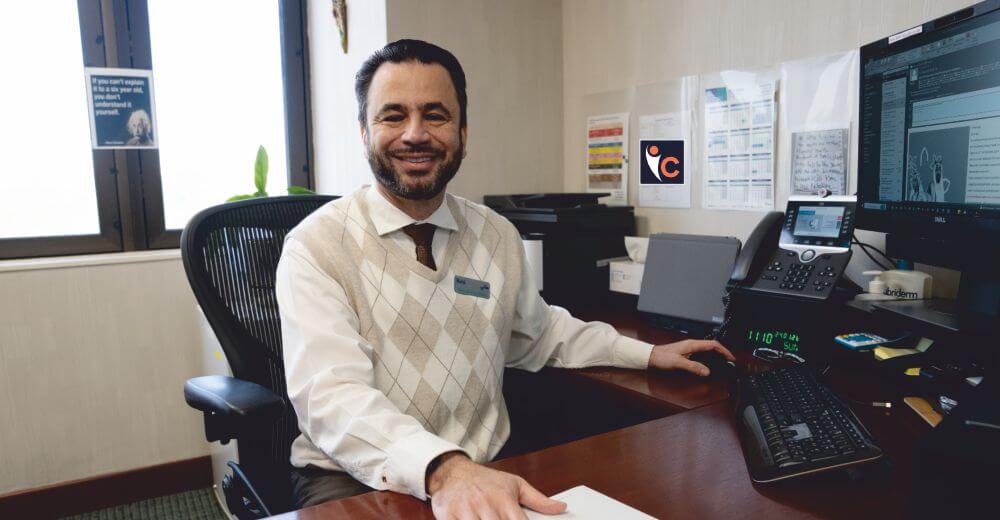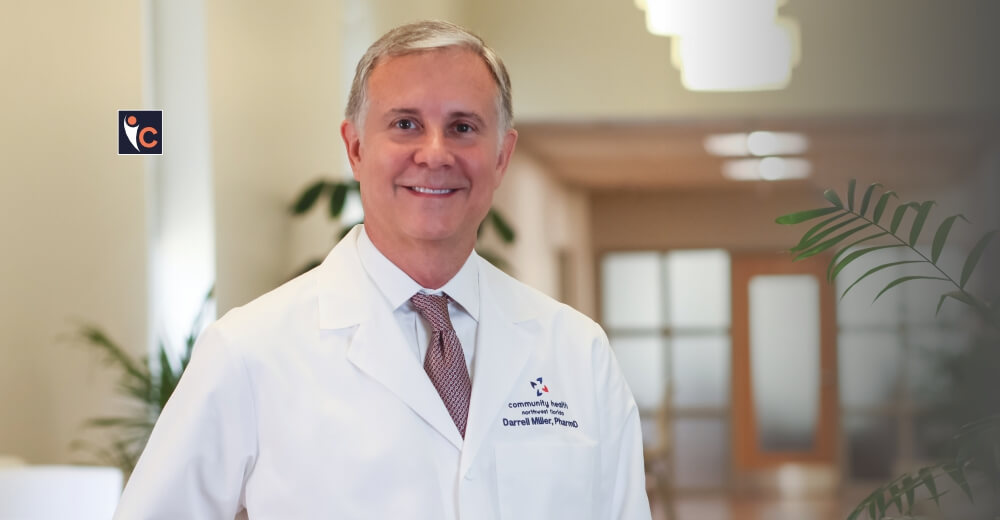Pelvic Rehabilitation is a specialized form of analysis and cure that focuses on addressing dysfunctions and pain in the pelvic floor muscles, making it a vital resource for those grappling with persistent pelvic discomfort. Pelvic Rehabilitation Medicine (PRM) stands out as an esteemed organization in this field, offering a unique approach to pelvic pain management through its proprietary PRM Protocol™.
With a commitment to providing personalized care and innovative treatment options, PRM strives to improve the quality of life for every patient suffering from pelvic pain while also providing treatment for those suffering from endometriosis.
Led by Co-founders Allyson Augusta Shrikhande, the Chief Medical Officer and Gautam Shrikhande, the Chief Executive Officer, PRM is dedicated to providing better care for every pelvic pain patient. Since 2017, PRM has been at the forefront of offering innovative solutions to this pervasive health crisis.
At the core of PRM’s approach is the proprietary PRM Protocol™, a simple yet powerful office-based procedure designed to target inflammation and nerve pain in the pelvis directly. With a focus on reducing patients’ suffering, PRM is committed to improving their quality of life.
From leadership to frontline staff, every member of the PRM team embodies profound empathy for patients’ struggles. This empathy underpins PRM’s philosophy—a resolute commitment to delivering superior care to every pelvic pain patient.
In the realm of pelvic health, PRM is a shining example of dedication, compassion and progress. With an unrelenting dedication to enhancing patients’ well-being, PRM continues to lead the charge toward comprehensive understanding and effective treatment of pelvic pain. At the heart of PRM’s mission lies a simple yet profound belief—that every individual enduring pelvic pain deserves better.
Compassionate Care
Allyson drew the inspiration to start PRM from her own journey with chronic pelvic pain. “I was inspired to focus my career on helping chronic abdominal pelvic pain patients when I suffered with chronic pelvic pain myself,” she shares. It was isolating given the private nature of the symptoms of pain around intercourse, bladder and bowel symptoms.
Allyson’s personal experience led her to recognize a significant gap in healthcare. “I realized that there was minimal knowledge around diagnosing and treatment options for chronic pelvic pain, and I did not particularly like any of the options given to me,” she explains. Therefore, she along with her husband—Gautam created an option that she would have wanted as a patient and that is how the PRM protocol came to be.
Driven by her empathy for pelvic pain patients, Allyson is committed to fostering a supportive environment at Pelvic Rehabilitation Medicine. “As a pelvic pain patient myself, I really wanted to make the environment at PRM a safe space to share intimate realities and symptoms,” she emphasizes. A place where the staff and providers were familiar with pelvic pain symptoms, a place where pelvic pain patients would feel at home. At PRM, Allyson’s vision of compassionate care and understanding is realized, creating a haven for patients seeking relief and support.
Driven by her empathy for pelvic pain patients, Allyson is committed to fostering a supportive environment at Pelvic Rehabilitation Medicine. “As a pelvic pain patient myself, I really wanted to make the environment at PRM a safe space to share intimate realities and symptoms,” she emphasizes. A place where the staff and providers were familiar with pelvic pain symptoms, a place where pelvic pain patients would feel at home. At PRM, Allyson’s vision of compassionate care and understanding is realized, creating a haven for patients seeking relief and support.
Breaking the Silence
“In certain circumstances, there is no ‘cure’ for pelvic pain as there may be an underlying chronic disease, and some patients may have intermittent flare-ups throughout their lifetime and require maintenance treatment,” notes Allyson.
Reflecting on her own experience with chronic abdominal pelvic pain, Allyson emphasizes the importance of patient-centered care. “Suffering in silence for many years from the terrible symptoms of chronic abdominal pelvic pain is not something anyone forgets,” she shares.
Allyson led with what she wanted as a patient when making decisions and when training the providers on how to serve PRM’s patients to the best of their abilities. At Pelvic Rehabilitation Medicine, continuous improvement is a core value. “As a company, we are continuously evolving, learning, growing and striving to be better than we were yesterday,” Allyson affirms.
Echoing this sentiment, Gautam highlights the organization’s commitment to patient-centric care. “As a physician, it is always paramount to our organization to keep our patients first and deliver care in an outcome-driven manner,” he states. “I feel that if we continue to focus on our excellent quality of care, everything else will fall into place.” With a steadfast dedication to excellence and patient well-being, Pelvic Rehabilitation Medicine stands as a beacon of hope and healing for those suffering from pelvic pain.
Taboo to Advocacy
Allyson shares her journey to breaking the silence surrounding women’s health. “I grew up in an environment both at home and away from home, where it was taboo to openly discuss periods, or bladder pain, or sex,” she reveals. It was not until she suffered with issues in all three departments, that she exclaimed questioning, “What am I doing here? This is crazy, the cycle must be broken. If I don’t talk about it, then my daughter and other young girls will continue to suffer in silence as well.”
Allyson’s personal experience ignited her mission to advocate for open dialogue on taboo women’s health topics. It was this realization that fueled her desire to speak up and she has not stopped talking about taboo women’s health topics since.
Recognizing the prevalence of pelvic pain among women, Allyson stresses the importance of discussion for education and research funding. “Pelvic pain affects 25% of women during their reproductive years, it is very common and talking about these issues is paramount to education and research funding for women’s health, endometriosis and period pain,” she emphasizes.
At PRM, this commitment to breaking barriers in women’s health is exemplified by their latest behavioral health course titled “Let’s Talk About Sex.”
Restoring Comfort
“The PRM Protocol™ is a functional, restorative approach to rehabilitate the dysfunctional nerves and muscles of the pelvis that co-exist and quite often are a major culprit of the reason why people have chronic abdominal pelvic pain symptoms,” explains Allyson.
Describing the procedure, Allyson details that conceptually, a very thin flexible needle is placed externally near the medial buttock and using an ultrasound targets the fascial and muscle restrictions around the different pelvic nerves to free them from constriction. This increases blood flow to the nerve. Then, medication is placed around the nerve to reset the pelvic nerves to help them fire in a calmer more relaxed appropriate state that will not cause pain.
With its proprietary and office-based nature, the PRM Protocol™ offers patients a simple and effective solution without any downtime, providing hope for those suffering from chronic pelvic pain symptoms.
Innovative Strategies for Healing
“There are many ways,” explains Allyson, “among them, the first is actively collecting outcome data on our patients nationally and publishing these outcomes.” Allyson continues, “When you are publishing in peer-reviewed journals, you are constantly reading other peer-reviewed journals in PubMed to use as references to help prove your hypothesis.”
Allyson further elaborates on the second, she often gives talks on the diagnosis and treatment of chronic pelvic pain and Endometriosis. Her next talk will be at the Endometriosis Summit in March of 2024, presenting how the PRM protocol is keeping patients out of the Emergency Room, off opioids and overall decreasing the number of surgeries our patients undergo in a lifetime. She says, “This forces me to constantly be on top of the latest literature.” Lastly, attending society meetings on women’s health, urology and pain is a great way to continue learning.
Uniting Forces
“Gautam’s executive leadership across all departments frees me to concentrate on clinical quality, publishing, speaking engagements, and collaborating with our marketing team. Together, we ensure our patients and referring providers understand the unique aspects of the PRM protocol and our Surgical department, distinguishing us from other options available in the US,” states.
Reflecting on their collaboration, Gautam adds that the collaboration helps him understand the patients and their clinical needs at a very high level. It also allows him to work both with the payors and the greater healthcare community to continue to raise awareness of pelvic pain, endometriosis and women’s health in general. This synergistic partnership between leadership ensures a comprehensive approach to advancing pelvic health care and awareness at PRM.
Facing the Challenges
Allyson notes that one of the biggest challenges with chronic abdominal pelvic pain is the silent nature of the disease. Training more healthcare providers on how to recognize pelvic floor pain and endometriosis is a great place to start. Another major challenge is the payors do not fully understand the disease process, making it difficult to connect with them and demonstrate solutions best for the patient and the healthcare system.
Gautam adds insight that one of the most significant challenges of treating chronic pelvic pain is that most imaging and diagnostic testing is normal. He states, “This requires us to both improve clinical acumen in the treatment of these patients and develop an integrated care model to address the complexity of our patients.”
Addressing these challenges head-on, PRM is dedicated to enhancing awareness, improving clinical understanding and advocating for integrated care models to better serve patients with chronic pelvic pain.
Streamlining Healthcare
On leveraging technology and innovative solutions for enhancing patient care, “We implemented a streamlined automated patient intake process,” says Allyson. With the goal of decreasing wait times and providing a low-stress, efficient experience for PRM’s patients who are already stressed from their pain, they have implemented real-time automated verification of benefits at the time of making an appointment.
She adds, “Increasing cost transparency, which we hope will relieve stress. We have rolled our care credit, to increase access to care with financing for patients that need our help.” Lastly, they are slowly rolling out automated patient scheduling, which will also improve access to care and ease of appointment making. Allyson passionately expresses, “We rolled out same-day scheduling and same-day treatment initiatives with a goal of decreasing the time our poor patients are suffering.”
At this point, 56% of PRM’s new patients start treatment on the same day as their new patient appointment. Allyson points out, that the longer the abdominal pelvic pain symptoms are there, the harder it is to make it go away. “We want to get patients on the road to healing as soon as possible!” explains Allyson.
Implementing these initiatives is crucial for enhancing the patient experience and ensuring timely access to care. By reducing wait times and providing same-day treatment options, PRM aims to alleviate the suffering of patients and expedite their journey to recovery.
Allies for Change
Allyson considers contributing to raising awareness about pelvic pain as one of the major goals for her in 2024. “I strive to continue to do better in this arena as it is such a vital component of my role as Co-founder of PRM,” emphasizes Allyson.
With a Clinical Advisory Board at PRM comprising some of the Nation’s greatest medical leaders in abdomen-pelvic pain, they publish on defining the disease and how they think the treatment algorithm should look for chronic abdominal pelvic pain patients with an emphasis on early disease recognition and treatment. She continues, “I also use medical conferences and social media as platforms for educating people about PRM and women’s health.”
Reflecting on impactful collaborations, Allyson mentions her friend—Shannon Cohn is a friend “I am a big fan of all her work with both her independent films Endo What and Below The Belt and her work with congress.” Allyson admires her as a force, she shares, “It has been amazing to see the progress she has made in both raising awareness about Endometriosis and in pushing for government funding and policies.”
In agreement, Gautam underlines, “We have several publications in highly respected peer-reviewed international journals highlighting the fact that chronic pelvic pain affects 15% of the population.” These efforts accentuate PRM’s commitment to advancing awareness and understanding of pelvic health issues on both medical and societal levels.
Towards Faster Relief
Allyson shares her goals, stating, “My aspirations are to continue to grow and serve our patients with the highest quality and service.” She emphasizes her dream for patients to find relief sooner, saying, “I want to be the first stop not the last, as on average our patients have seen 8-10 providers and suffered for 6-8 years before walking in our door.”
Echoing this sentiment, Gautam adds, “PRM’s goal is to continue to grow as a nationally integrated model of healthcare for chronic pelvic pain.” He further elaborates that they hope to provide more access to care not only with more locations nationally but also by creating more awareness and education for this patient population as well as with the payors.
These shared goals direct PRM towards improving access to high-quality care and raising awareness about chronic pelvic pain on a national scale.















